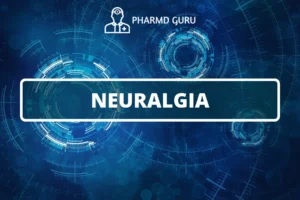Headaches are a common ailment experienced by individuals of all ages. They can vary in intensity, duration, and underlying causes. Understanding the etiopathogenesis, or the origin and development, of headaches is crucial for effective management and relief. In this article, we will explore the etiopathogenesis of headaches and discuss the pharmacotherapy options used in their treatment.
SCROLL DOWN TO THE BOTTOM OF THIS PAGE FOR ACTUAL NOTES.
Table of Contents
- Introduction
- Understanding Headaches
- Primary Headaches
- Secondary Headaches
- Etiopathogenesis of Headaches
- Tension-Type Headaches
- Migraine Headaches
- Cluster Headaches
- Pharmacotherapy for Headaches
- Over-the-Counter Analgesics
- Triptans
- Ergotamine Derivatives
- Preventive Medications
1. Introduction
Headaches are characterized by pain or discomfort in the head or neck region. They can range from mild and transient to severe and chronic, significantly impacting an individual’s daily life. Headaches can be classified into two main categories: primary and secondary headaches.
2. Understanding Headaches
Primary headaches are standalone conditions, while secondary headaches are symptoms of an underlying health issue, such as an injury or illness. Primary headaches, such as tension-type headaches and migraines, are more common and account for the majority of headache cases.
3. Primary Headaches
4. Tension-Type Headaches
Tension-type headaches are the most common type of primary headache. They are often described as a dull, aching pain that affects both sides of the head. Tension-type headaches can be triggered by stress, muscle tension, poor posture, or other factors. The exact etiology is not fully understood, but it is believed to involve a combination of muscular and psychological factors.
5. Migraine Headaches
Migraine headaches are characterized by recurrent episodes of moderate to severe throbbing pain, often accompanied by other symptoms such as nausea, vomiting, and sensitivity to light and sound. The exact cause of migraines is still under investigation, but genetics, hormonal changes, and certain triggers, such as certain foods or environmental factors, are believed to play a role.
6. Cluster Headaches
Cluster headaches are rare but extremely painful headaches that occur in clusters or groups. They are characterized by severe, excruciating pain on one side of the head, often around the eye. Cluster headaches are thought to involve abnormalities in the hypothalamus, a region of the brain that regulates various bodily functions.
7. Secondary Headaches
Secondary headaches are caused by underlying health conditions or factors such as head injury, sinusitis, medication overuse, or vascular disorders. These headaches are typically symptomatic of an underlying issue and require appropriate treatment of the root cause.
8. Etiopathogenesis of Headaches
The etiopathogenesis of headaches can vary depending on the type. Factors such as genetics, hormonal changes, neurotransmitter imbalances, vascular abnormalities, and lifestyle factors can contribute to the development of headaches.
9. Pharmacotherapy for Headaches
Pharmacotherapy plays a crucial role in managing headaches by providing relief and reducing the frequency and intensity of episodes. The following medications are commonly used:
10. Over-the-Counter Analgesics
For mild to moderate headaches, over-the-counter analgesics such as acetaminophen, ibuprofen, or aspirin can be effective in providing temporary relief.
11. Triptans
Triptans are a class of medications specifically designed to treat migraines. They work by constricting blood vessels and reducing inflammation in the brain, effectively relieving migraine symptoms.
12. Ergotamine Derivatives
Ergotamine derivatives, such as dihydroergotamine, are another option for the acute treatment of migraines. They work by constricting blood vessels and reducing the release of pain-causing substances in the brain.
13. Preventive Medications
In cases of frequent or severe headaches, preventive medications may be prescribed to reduce the frequency and severity of episodes. These medications can include beta-blockers, antidepressants, anticonvulsants, or calcium channel blockers, depending on the specific type of headache and individual factors.
ACTUAL NOTES:




